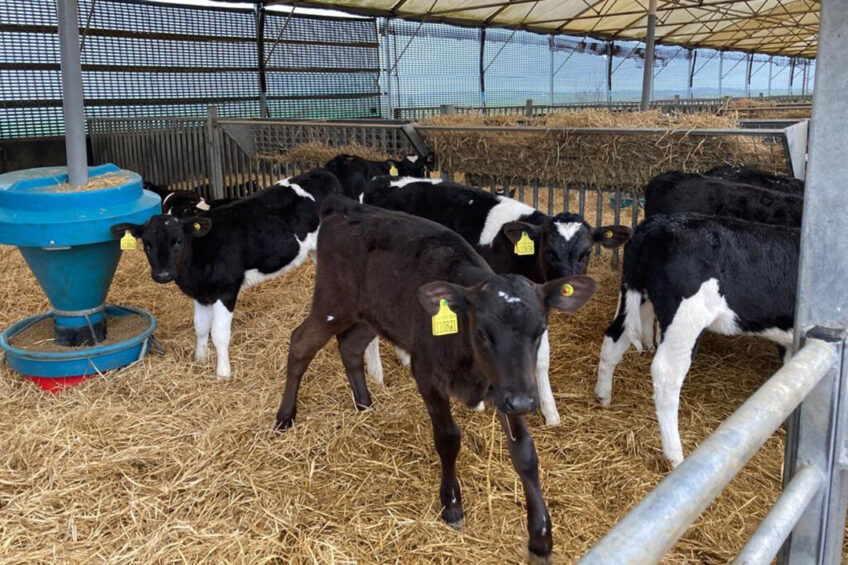Ad-lib feeding to improve calf daily live weight gain

Up to 1kg of daily live weight gain (DLWG) can be achieved using this type of feeding system when birth weights are at least 35 kg, so dairy farmers are urged to weigh the advantages of this type of feeding.
In a recent press release, Carr’s Billington’s calf specialist Clare Lawson states that up to 1kg of daily live weight gain (DLWG) can be achieved using this type of feeding system when birth weights are at least 35kg.
“When calves feed naturally on the cow, they typically drink between 11 and 15 litres per day. Ad-lib mimics this instinct and can often lead to better growth rates than in a restrictive system.
“There’s also the added benefit that calves are fully weaned off milk on average four days earlier on ad-lib systems meaning feeding costs can be reduced.”

There is evidence to suggest that if calves achieve an extra 0.2kg DLWG in the first 8 weeks, it can result in 500 extra kilos of milk in their first lactation.
“Therefore, if you are able to go above this and achieve up to 1kg of DLWG, this could pay dividends once these cows reach the milking herd,” she adds.
To optimise performance with the system, Lawson recommends feeding a top-quality milk replacement powder.
Elevating the plane of nutrition pre-weaning not only leads to higher calf growth rates and improved heifer performance but can also result in long-term positive impacts on fertility, survivability, and lactation performance, providing a clear return on investment.
Long term impacts
The advice is bolstered by the latest LifeStart Science research that revealed calves provided with a consistent, high plane of nutrition via ad-lib milk feeding, experience benefits post weaning above those animals of the same genetic merit that are fed a lower plane of nutrition.
“Elevating the plane of nutrition pre-weaning not only leads to higher calf growth rates and improved heifer performance but can also result in long-term positive impacts on fertility, survivability and lactation performance providing a clear return on investment,” says Lawson.
Farmers must also take steps to smooth the transition from milk to non-liquid diets to avoid a post-weaning growth check, which applies to both ad-lib systems and restrictive systems.
“Calves will need to be eating 1.5 to 2kg of starter feeds before milk is fully taken away. When feeding ad-lib, calves can be slowly weaned over 10 days by gradually taking milk away for a certain period of the day, with the total milk feeding period becoming shorter over a set period of time.

It is advised that farmers contact their nutritionist if target calf growth rates are not being achieved, in order to review all aspects of calf management.
“Every farm is very different in its system, so we focus on working closely with the farmer and their vet when offering advice.
“As a team, we can maximise the pool of ideas and help identify the best solutions to try, bringing in suggestions from our knowledge and experience of other similar farms and from trial work,” concludes Lawson.
Author: Ali Parker
Join 13,000+ subscribers
Subscribe to our newsletter to stay updated about all the need-to-know content in the dairy sector, two times a week.










